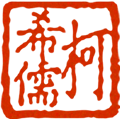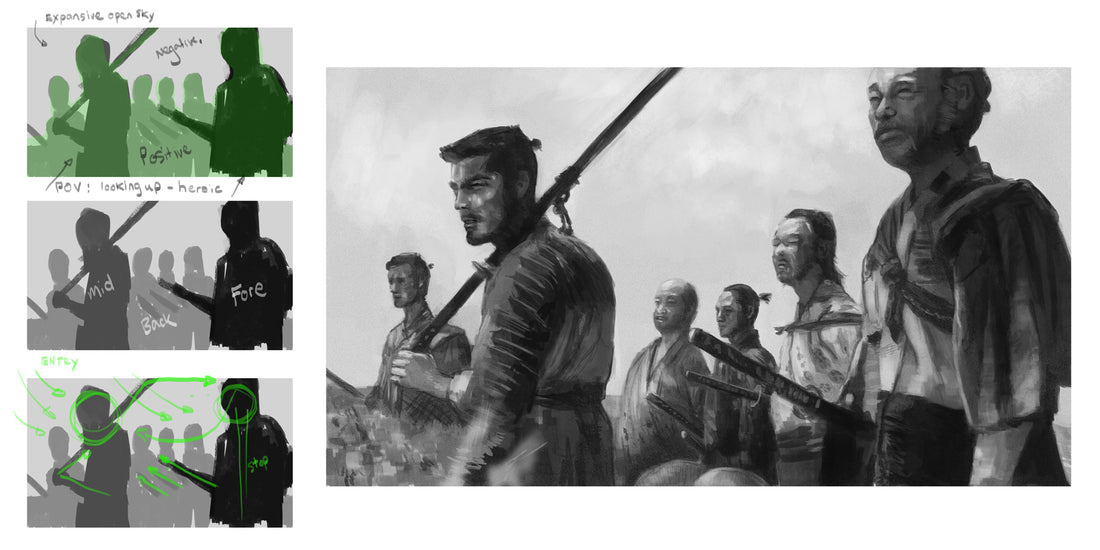Conversations with an acquaintance a few years back reminded me of how much influence cinema and 'art house' films have had over me. Our conversation turned to Akira Kurosawa and his amazing work.
I had a copy of Akira Kurosawa's 'Dreams' (1990), and other than that I've bumped into 'Ran' (1985) a few times over the last 10 years. Sadly, my exposure to Kurosawa's work had been limited, there is so much more in his work that I wanted to explore. It's one of those things, with the tumultuous roar of information that assaults us every day at times our list gets stacked so deep that we come back to something that interests us much later than when we originally found it. That conversation, about 3 years back now, sparked a need to explore more of Kurosawa's work. Prompting me to stumbled about Chichester early the next day to get hold of a copy of 'Seven Samurai' (1954).
Kurosawa's work has influenced filmmakers for decades and this is one of the films that has carried most of his influence into the hearts and minds of other creators - but why? What makes this black and white, a three-hour-long film so powerful that people today still consider it to be one of the best films ever made? You'll find other opinions scattered across the internet, in books, lecture notes and so on - I'm sure if you've found this post you probably have been reading about Kurosawa and know much more than I do. I humbly submit my own voice to the vast sea of sound and type out there, putting forward what I've learnt from my own sketches and studies of stills lifted from the film.
The most striking thing I've noticed working on my Kurosawa studies is the masterful composition he has crafted into each shot and work in general.
Akira Kurosawa studied to be an artist (I assume a painter - perhaps the graphic arts... but I don't know for certain) but he was considered not to have had enough personal vision so he continued into making film instead, but It's quite obvious that his studies and knowledge of the visual arts and design are being employed if you consider the continuous use of art and design principles within 'Seven Samurai'.
From a compositional point of view Kurosawa has given special attention to each scene, almost every shot - action sequences look like carefully composed illustrations or paintings, nothing is left to chance - everything has been given serious thought. The key here is that composition has been thought about over time and motion and the result, on the one hand, leaves us looking at each frame as if they have been perfectly composed as a single shot, and on the other transported into a richness and depth of imagery as each composed frame bombards onto our retina at 25 frames per second.
It's the remarkable achievement of a creative mind way ahead of its time, the use of shape and form in composing (black and white aid us to see in values and shapes - I imagine it gives us a clearer view of Kurosawa's viewpoint). Then there's the use of unexpected and dynamic POVs - these are things modern filmmakers have strived to achieve.
All the stills I examined had fantastic compositions, there's a very deliberate arrangement in the whole film - Kurosawa is controlling our perceptions and leading us through the epic.

In the study above there's a beautiful balance between negative and positive spaces, the point of view (POV) is low - looking up at the determined faces of the samurai placing them in a heroic stance above us. The negative space is the open sky, expansive giving us a sense of an unwritten story and placing the characters further on a level above us - as if they're gods.
There's a strong arrangement of shapes: The samurai on the right is in the foreground, the eldest of the group. Mifune stands in the mid-ground perfectly placed in the rule of thirds, so is the eldest samurai - his left is in line with another vertical third line. The others are in the background forming a half-circle around Mifune. There's a zigzag composition starting with the face of the samurai in the foreground to Mifune's face in the mid-ground and then to the samurai's face standing next to the older one, from there, one tends to follow the circle around through the various other faces ending with the samurai to the left of Mifune.
My eye flows in from the top mid/left to the strong vertical shape of the eldest samurai, up to his face, the hilt of his sword and his eyes point me towards Mifune (the background figures support this movement). The intensity on Mifune's face tells me something important lies ahead of them, something I can't yet see. My eye follows his arm to his sword to the top of the frame back to the samurai in the foreground. In this way my attention is kept within the composition in a circular pattern, picking up further details each time I complete a circuit until the director chooses to release me on to the next scene.
Notice that Mifune has been singled out as different, He and the eldest samurai occupy the two most important spaces on the picture plane but the older samurai supports Mifune's uniqueness. To emphasise Mifune's unique position Akira Kurosawa has composed the shot with Mifune holding his sword over his shoulder whilst the other samurai have their swords where they should be, at their sides. This mechanism supports several important purposes - one being that Mifune isn't actually a samurai while the others are.
I love so many things about Akira Kurosawa's skills and work - love the graininess and strong shapes within 'Seven Samurai'. I can't help but think that it must have influenced generations of artists who work in pen and ink and halftone patterns to emulate the graininess and grit of air and atmosphere between forms. There's an art book on my shelf by Inoue Takehiko which feels similar to the images in 'Seven Samurai'.
Inspirational work - get yourself some Akira Kurosawa.

